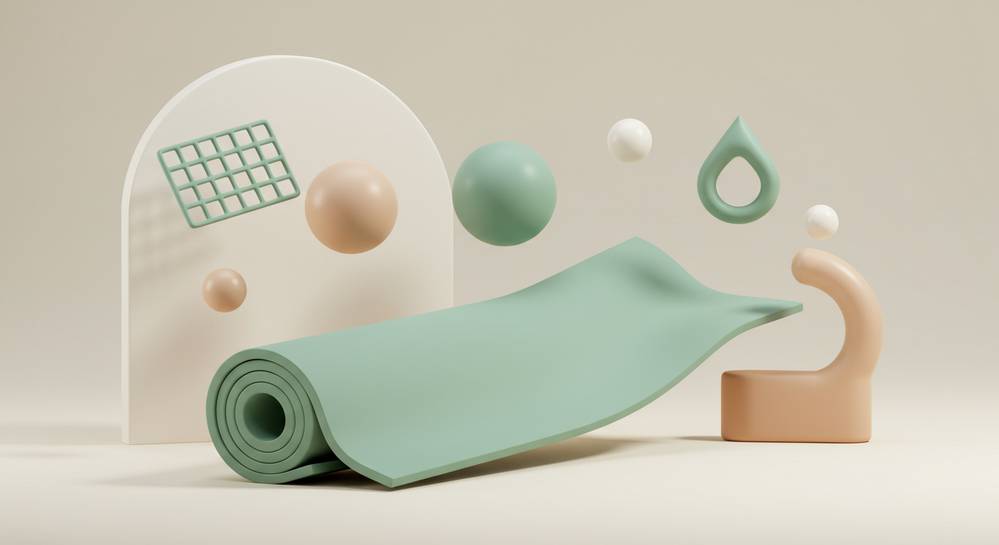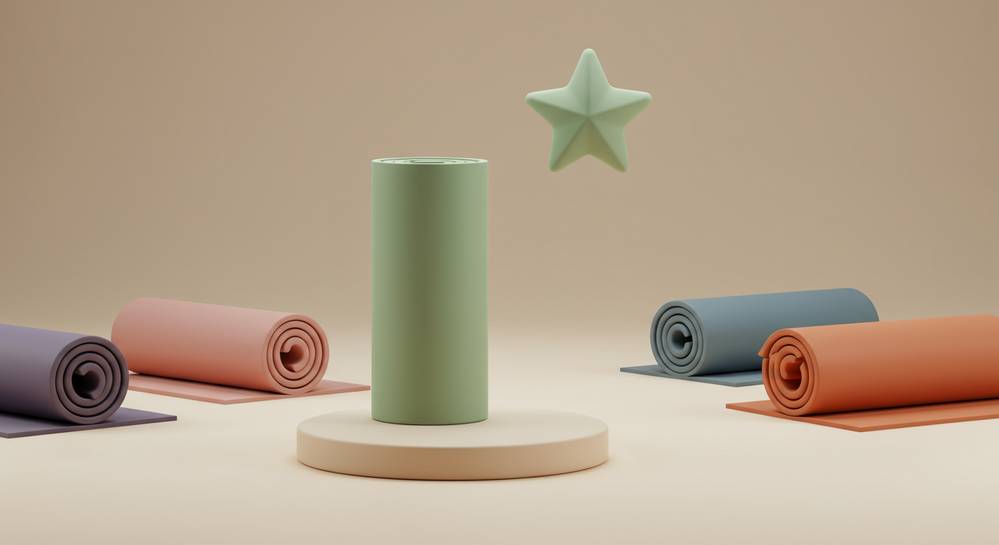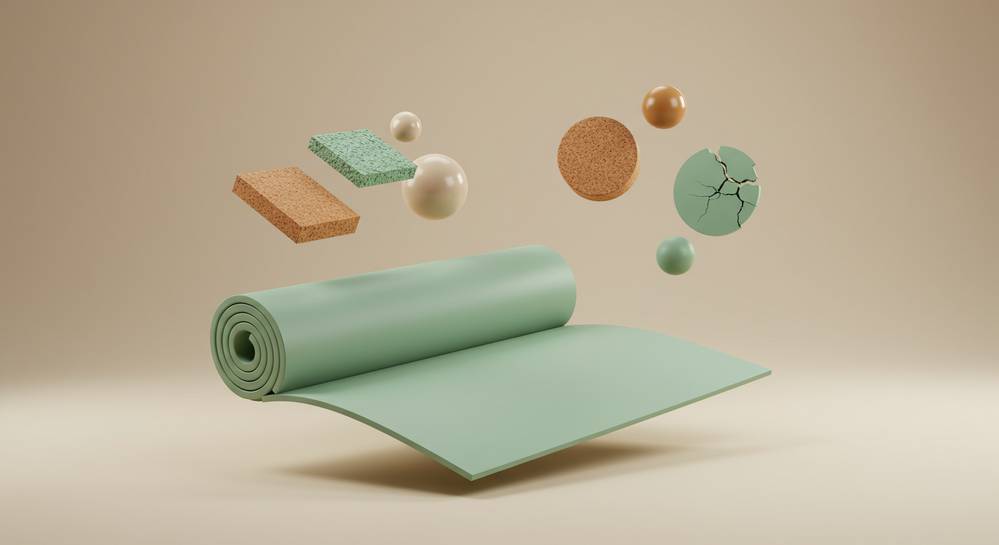A consistent yoga routine demands a mat that can keep up. Unlike mats for occasional use, the best yoga mats for daily practice are defined by their durability, unwavering grip, and supportive cushioning. This guide breaks down the essential factors to consider, helping you choose a reliable foundation for your daily commitment to wellness and movement, ensuring your investment enhances every session.
Key features to consider in a daily yoga mat

Finding the best yoga mats for daily practice requires focusing on performance over aesthetics. A mat for consistent use must offer unwavering support, safety, and resilience. Prioritizing the right features ensures your mat enhances your practice instead of hindering it. This investment in quality equipment directly impacts your daily experience on the mat.
- Material Composition: The material dictates grip, durability, and feel. Natural rubber provides superior traction, while high-density PVC offers exceptional longevity and cushion. For a lightweight and eco-friendly option, TPE is a strong choice, whereas cork offers a unique, naturally antimicrobial surface.
- Optimal Thickness: A thickness between 4mm and 6mm provides the ideal balance for daily practitioners. This range offers enough cushioning to protect joints during floor poses without sacrificing the stability needed for balancing postures.
- Grip and Texture: A reliable non slip yoga mat surface is essential for safety and confidence. A textured finish or a polyurethane top layer prevents slipping, even during sweaty, dynamic flows. This feature allows you to hold poses securely without distraction.
- Long-Term Durability: A durable yoga mat resists the wear and tear of daily use. High-quality, dense materials prevent flaking, tearing, or developing permanent indentations from your hands and feet. Understanding how to maintain your sports equipment will further extend its lifespan.
Top yoga mat recommendations for everyday use

Based on essential criteria, several models consistently rank as the best yoga mats for daily practice. Each recommendation targets a specific user priority, from unparalleled durability to sustainable design. This allows you to choose a mat that perfectly aligns with your practice style and personal values, ensuring a reliable foundation for your daily sessions.
For ultimate durability and support
The Manduka PRO is renowned for its unmatched density and resilience. This durable yoga mat is built to last a lifetime with a closed cell construction that blocks moisture and bacteria. It provides firm, stable cushioning that protects joints without feeling spongy. While it requires a break in period, its performance surface improves with every use.
For unmatched grip in any condition
The Lululemon The Mat is designed for superior traction. Its polyurethane top layer delivers an exceptional non slip yoga mat surface, even during intense, sweaty practices. A natural rubber base offers comfortable cushioning, while an antimicrobial additive prevents mold and mildew. Its dual sided design adds versatility for different yoga styles.
For the eco conscious practitioner
The JadeYoga Harmony mat is a top choice for sustainability. Made from natural rubber, a renewable resource, it provides incredible grip from the very first session. It strikes a perfect balance between traction and support. For every mat sold, the company plants a tree, reinforcing its commitment to the environment.
The role of material in durability and performance

A mats material is the single most important factor influencing its long term performance. For daily use, you need a composition that balances grip, comfort, and resistance to wear. Each material brings a distinct set of properties to your practice, making it a crucial consideration when seeking the best yoga mats for daily practice.
- Polyvinyl Chloride (PVC): This synthetic material is the champion of durability. High density PVC mats can last for decades without peeling or flaking, offering excellent support. They provide superior cushioning for joints but can be slippery when new and are a less eco friendly option.
- Natural Rubber: Sourced from rubber trees, this material provides unmatched grip from the first use. It offers a grounded, stable feel and is a sustainable choice for the environmentally conscious. However, it is typically heavier and is unsuitable for those with latex allergies.
- Thermoplastic Elastomer (TPE): This is a man made blend of plastic and rubber polymers. TPE mats are lightweight, recyclable, and often more affordable. They provide good cushioning and grip, though they may not withstand intense daily use as well as high end PVC or natural rubber.
How to care for your mat to extend its life
A quality yoga mat is a significant investment in your daily routine. To ensure it provides lasting support, proper care is essential. Regular cleaning and correct storage prevent material degradation, preserve grip, and maintain hygiene. These simple habits will significantly extend the life of even the best yoga mats for daily practice, protecting your investment for years.
Post practice wipe down
After every session, especially sweaty ones, wipe your mat with a damp cloth. This simple step removes sweat, oils, and dirt that can break down the surface over time. For a deeper clean, use a specialized mat spray or a homemade solution of water and gentle essential oil. Avoid harsh chemicals or excessive water, which can damage the material and reduce its grip.
Deep cleaning routine
Perform a deep clean every few weeks, depending on your practice frequency. Submerge the mat in a bathtub with lukewarm water and a mild, non abrasive soap. Gently scrub the surface, rinse thoroughly with clean water, and hang it to air dry completely. Never put your mat in a washing machine or dryer, and ensure it is fully dry before rolling it up to prevent bacteria growth.
Proper storage methods
Store your mat rolled up in a cool, dry place away from direct sunlight. Prolonged sun exposure can cause the material to fade, become brittle, and lose its essential grip. Using a mat bag or strap can also protect your durable yoga mat from dust and physical damage during transport or storage.
Choosing the right mat is a foundational step toward a sustainable and rewarding daily yoga routine. By focusing on durable materials, appropriate thickness, and reliable grip, you can find a partner for your practice that provides comfort and stability for years. Your ideal mat will support your unique needs, so invest wisely and care for it well. For more insights into optimizing your athletic performance and gear, explore the expert advice at Sporting Currents.


